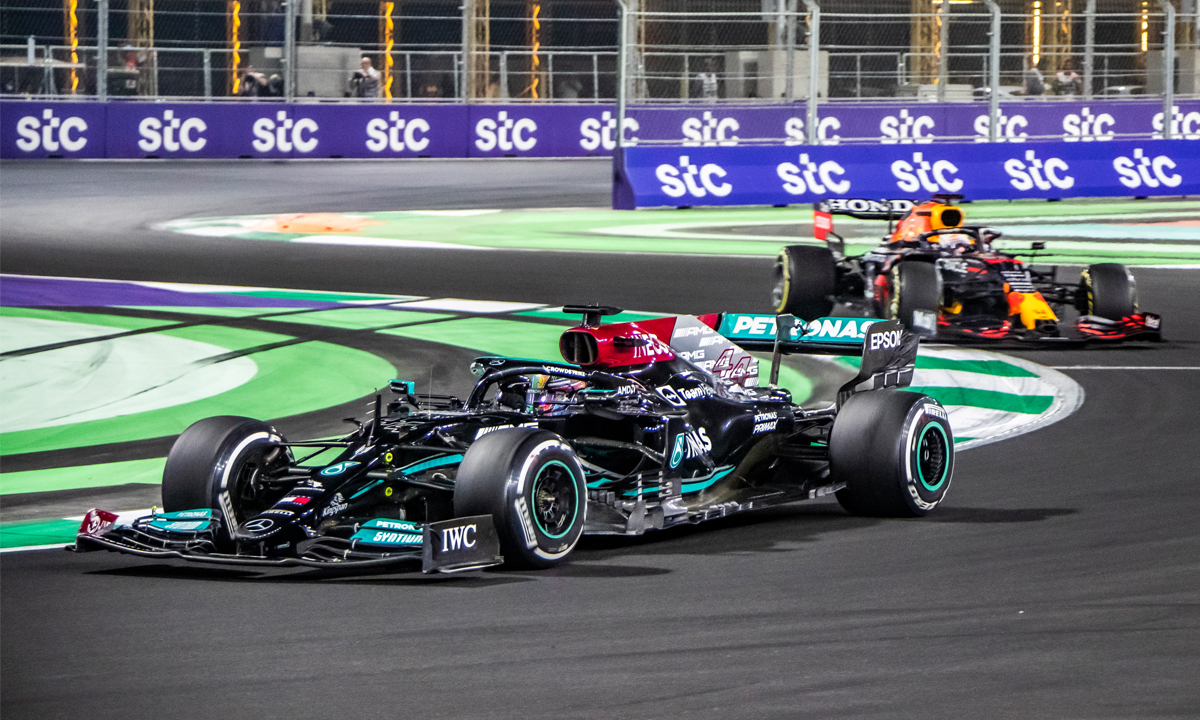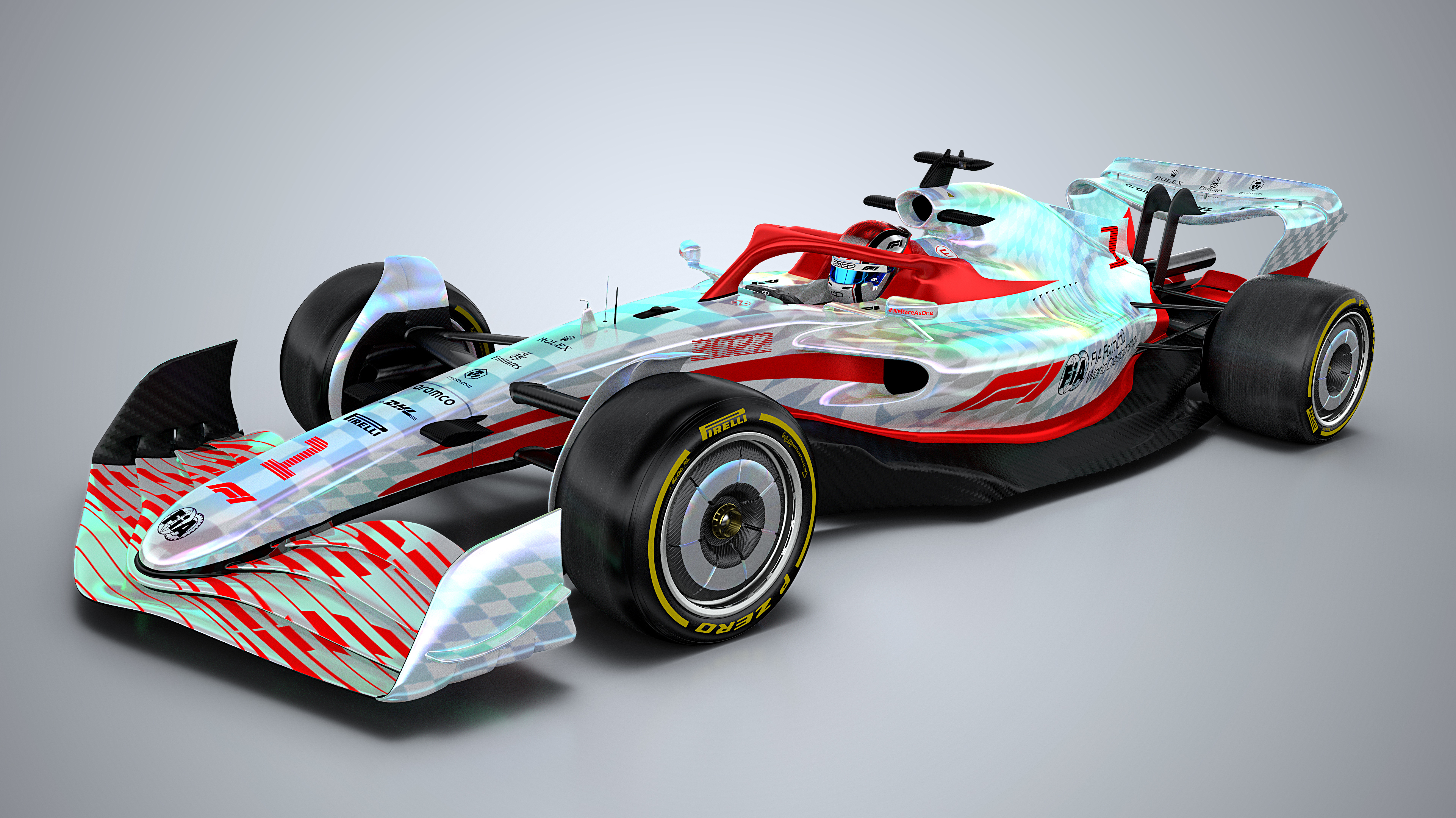The hidden reason you can’t take your eyes off Formula 1 this season
It’s all about those data insights

After an explosive end to the 2021 season, which saw Max Verstappen pip Lewis Hamilton to the title on the last lap of the final race, Formula 1 is a sport on the rise.
The success of Netflix series Drive to Survive, which for the last four years has offered fans a peek behind the curtain, has surely played a significant part in the sport’s renaissance.
As has the emergence of Red Bull as a genuine challenger to Mercedes, a team that has dominated the grid in recent history, winning the constructor’s championship in each of the last eight seasons.
However, there is another, less obvious reason Formula 1 has captured the attention of so many millions of new viewers this season. And it has everything to do with data.
According to Rob Smedley, a legend of Formula 1 now employed as Consulting Engineer, new initiatives coming out of a partnership with Amazon Web Services (AWS) are helping to breathe new life into the viewing experience.

“On the pit wall, you’re emotionally engaged with the race. We’re introducing tools and insights that bring fans along for that ride and really communicate the jeopardy,” Smedley tells TechRadar Pro.
“With the amount of data available to us in Formula 1, bringing in a cloud partner like AWS really turbocharges the system and allows us to bring data into the subconscious of the fans.”
Are you a pro? Subscribe to our newsletter
Sign up to the TechRadar Pro newsletter to get all the top news, opinion, features and guidance your business needs to succeed!
Deciphering Formula 1
One of the primary objectives of the AWS collaboration is to help unpack the intricacies of F1 for the everyman. Although most sports are simple enough for people to follow, even if they don’t grasp the nuances, F1 requires a little more background knowledge and has perhaps suffered for its impenetrability.
“F1 is the most technologically advanced sport. But as a by-product, it’s also the most complex from a strategic and tactical point of view,” explained Smedley.
“To understand what’s really going on through the medium of video alone, even for someone like myself, is almost impossible.”
Since partnering with AWS in 2018, F1 has put considerable energy and resources into developing new data-enabled experiences for fans, called F1 Insights. The broad idea is to ensure viewers are able to more effectively follow the smaller on-track developments, which come together to form a comprehensive picture of a race.

Using a combination of in-race signals and historical data, F1 performs various on-the-fly calculations to provide insight into each driver’s pit stop strategy, tyre degradation, the likelihood of an undercut and more. All of this information is served up to viewers in the form of simple graphics, which the commentators can explain further where necessary.
New for the 2022 season are additional data points that help explain the intricacies of qualifying, the race against the stopwatch that determines the starting grid positions for Sunday's race. Given the pace and number of moving parts, qualifying can be a little difficult to follow, but F1 has deployed new graphics that better highlight the progress of each team as the session unfolds.
Separately, AWS and F1 recently announced a large-scale archive migration project that saw the pair bring hundreds of thousands of hours of race footage into a centralized database. Although fans don’t have access to the footage library itself, the archive will likely act as the foundation for future F1 Insights.
Although there was initially a level of resistance from some quarters, as had been anticipated, the new data initiatives have been a hit. The fans are now calling for more and more, Smedley told us.
New car, new race
Another crucial way that data insights coming out of the AWS partnership have informed the viewing experience for fans is on the track itself.
In 2017, F1 conducted a broad survey to determine what fans were most looking for and, presumably, why viewership numbers were on the decline. The resounding conclusion: fans were hungry for closer, wheel-to-wheel racing.
The problem, Smedley told us, is that the top teams have been too successful in optimizing for aerodynamic efficiency, which in turn creates a flow of turbulent air behind the car. The consequence is that drivers in pursuit cannot follow closely without losing downforce, with obvious ramifications for the spectacle of the race.
To redress the balance and deliver on the expectations of fans, the sport and its governing body, the FIA, has spent the last several years working on a significant overhaul to the regulations and stock car design.
“Formula 1’s DNA, at its heart, is about excellence of human and machine, so the best teams and drivers should always win the races and world championships. We’re not looking to meddle with the DNA of the sport,” said Smedley.
“However, what we do want is really close battles, like we saw between Hamilton and Verstappen last season.”

The product of simulations running on up to 7,500 cores in the AWS cloud, the 2022 car is equipped with a new ground-effect floor, which changes the aerodynamic profile to limit the amount of “dirty air” thrown backwards. The front wing and nose have also been redesigned, with the same objective in mind.
The 2021 car is estimated to have lost almost 50% of its downforce when within a single car length of the driver in front. With the new design, F1 management hoped to bring that number down to 18%, and the racing so far this season is testament to their success.
“The key objective was always that the cars could follow more closely together, and all the key metrics in terms of overtaking from the first few races show it’s been a resounding success,” said Smedley.
“This was a lesson in exactly how technology should be used; you identify a subject matter expert, establish clear objectives and bring in technology to deliver. When it works like that, it’s a thing of beauty.”
More to come
In its quest to translate data into new fan experiences and optimize for closer racing on-track, Formula 1 has plenty left in the tank.
“The potential of what F1 and AWS can do together is huge, absolutely immense,” Smedley told us. “We’ve been able to make huge leaps, but we’re just a tiny way through the journey.”
One of the major benefits of the partnership so far has been the opportunity to slash the time and cost required to perform complex simulations that help to fine-tune the design of the F1 car.
Previously, it would take in the region of 60 hours to perform a complete simulation of the impact of one car's aerodynamic wake on another, effectively placing a hard limit on the extent of year-on-year improvements. However, by leaning into the unique attributes of the cloud, AWS has been able to cut the simulation time by 80%, to just twelve hours. And with further advances in computing, storage and networking technologies, this time is bound to fall further.
Historically, the cost of compute has also conferred an advantage to the wealthier teams, who could afford to purchase more performant hardware and therefore run a greater number of simulations when building upon the stock car design.
However, the maturation of cloud computing has changed the picture, in combination with a new sliding scale that limits the amount of time teams can spend on simulation depending on their performance on-track.
The expected result is that the performance gap between the best and worst teams will lessen over time, making for much less predictable racing and more variety on the podium.
“Cloud is the great equalizer, because it democratizes compute power. It’s so much more readily affordable and available than on-prem,” added Smedley.
“The fact that technology moves on at such a fast pace means that CapEx would be obsolete in two years’ time. But cloud is the leveller between the haves and have nots, because it’s readily available and becoming cheaper and cheaper.”
A previous version of this article misstated the number of simulations conducted in the development of the 2022 F1 car, as well as the number of hours it takes to perform a complete simulation.

Joel Khalili is the News and Features Editor at TechRadar Pro, covering cybersecurity, data privacy, cloud, AI, blockchain, internet infrastructure, 5G, data storage and computing. He's responsible for curating our news content, as well as commissioning and producing features on the technologies that are transforming the way the world does business.